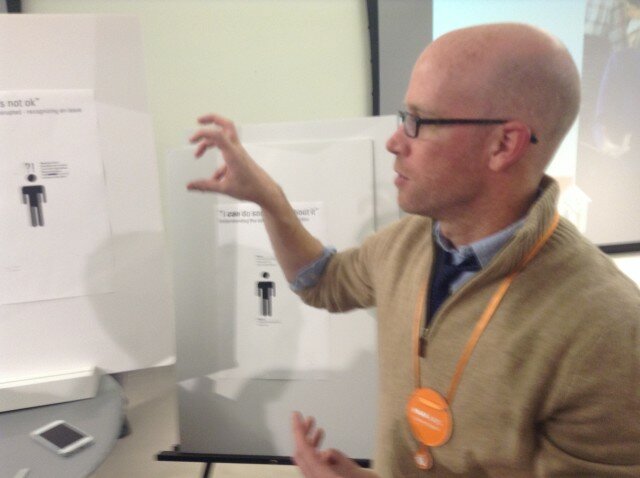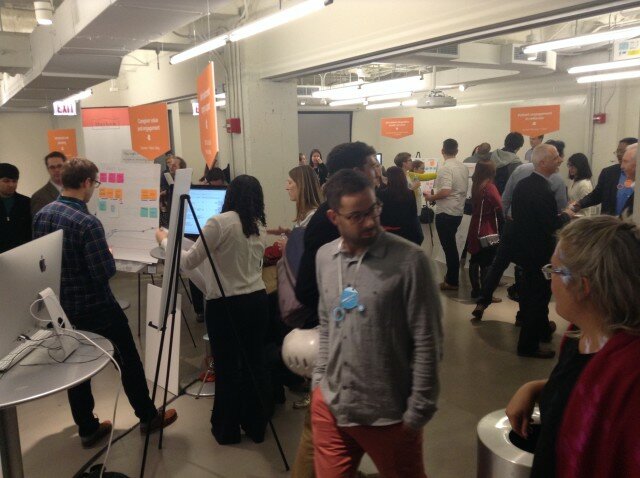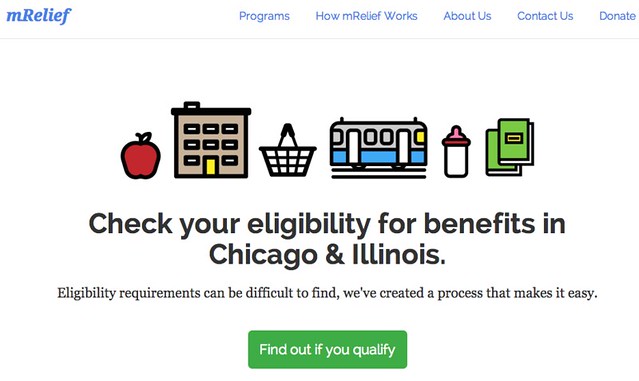Today the University of Illinois Press published, “Technology and the Resilience of Metropolitan Regions; Digital technologies and the future of cities”.
In mArch 2014 I wrote a section of this book titled, “Toward a Market Approach for Civic Innovation”. Here’s a draft of that section, reprinted below:
Toward a Market Approach for Civic Innovation
Jane Fountain wrote a paper for the 2013 UIC Urban Forum “Technology and the Resilience of Metropolitan Regions” panel called “Connecting technologies to citizenship”. In it, she writes of many trends and practices that are just emerging around the practice of civic innovation. It’s trendy
She writes of the persistence of the digital divide and the threat of a widening democratic divide, where residents do not get the benefits of representation where technology is absent from a community. She also writes of the opportunities present in high population density, the rise of smart phones and other mobile devices and the potential of “big data” to inform government services.
What I’d like to focus on in this response, however, is her focus on the question, How Civic are “Civic Technologies”? In my world, I frame that question in terms of popularity with regular residents. “Civic” means that it is in the mix when it comes to the public—that it has broad utility, broad acceptance, and is widely recognized as being a part of the fabric of civic life. This is the frame that we should bring to technology that seeks to serve residents in dense cities.
In my work at the Smart Chicago Collaborative, I helped create the Open311 system for the municipal government of the City of Chicago. This has led to the publication of millions of rows of public data and simple methods for developers and nascent companies to read and write directly to the enterprise service request system at the City—the technology backbone for the delivery of services in the third largest city in the United States. This is the largest implementation of Open311 anywhere.
The existence of Open311 in Chicago, however, has not led to the creation of many new tools. Only a handful of services connect to this system, and none have any traction in the public. Even though it was widely requested by the developer community and touted as a major opportunity for economic growth, there are no widely used resident-focused websites or systems that use Open311.
The current state of the market
The question is why, and I believe the answer is that there is no cohesive market for the civic innovation sector of the technology industry. In fact, very few of the actors in the market even understand themselves to be a part of the technology industry. A dominant frame of the civic hacker movement is the quick creation of tools, dashed off in hackathons or over feverish nights. The idea of being a part of the trillion-dollar industry is anathema to this frame.
The natural end result of these efforts are interesting tools with good intentions that are of limited use to the masses in cities. The current status of the civic innovation sector of the technology industry can analyzed as follows:
- There is good movement in the provision of data (raw materials)
- There is an abundance of energy around the making of things (labor)
- There is a paucity of thought around the why we make things or what the best thing is to make (market research, user testing, continuous improvement)
- There is even less thought around the relationship between the things we make and the universe of other things within which it fits (market analysis)
- Lastly, all of our things exist in an environment where their popularity is puny next to the opportunity (market penetration)
This state of affairs was evident in Professor Fountain’s paper, which had a review of a wide range of existing projects, tools, and companies. Included were municipal-driven projects like Citizens Connect, Commonwealth Connect, and the work in San Francisco as well as companies like SeeClickFix, CitySourced, and Granicus. She covered nonprofit projects like FixMyStreet and Electorate.Me.
This was a great scan that covered the field well, but it is illustrative of the jumble that defines the current state of the civic innovation sector of the technology industry—it completely lacks a frame for understanding. And without a frame, it is difficult to grow.
Framing the opportunity
When we view this milieu— this robust and creative mix of people doing work to improve lives in cities through technology—a natural frame emerges.
First off, civic innovation is a sector of the technology industry. This expansive language embraces a neighborhood blogger who measures cars with a homemade traffic counter as well as people who work at large startups looking to change municipal laws to support their business models.
There is a job called “Senior Counsel of Product” at Airbnb—the community marketplace for people to list, discover, and book unique accommodations around the world—whose job it is “advise our product and engineering teams to manage legal risk and ensure regulatory compliance on a broad range of legal issues”. That is a job generated by the civic innovation industry—it is explicitly designed to interact with the municipal structure. Yet my guess is that no one at Airbnb feels they are a part of the civic innovation sector—they just think they are a part of a startup.
However, all of the graphic designers at Airbnb see themselves as a part of a broader set of design professionals linked across companies, industries, and organizations. This frame is well-established in universities and other formal career development venues. Engineers segregate themselves into language-specific conferences like Pycon in order to deep-dive into their specialties. Civic innovation practitioners meet at hackathons and hack nights, but it’s most often something on the side, something other than their professional life.
Standards are emerging—they need to be supported
Just like any other economic sector, the civic innovation sector requires certain macro conditions under which it can thrive. These conditions are often wrought through formal regulatory & lobbying activities as well as the creation of standards. In this case, that revolves around data fluidity, format standards, ethical conduct, propagation of open source software, and adherence to principles of open government.
Open311 is one such standard—it refers to a “standardized protocol for location-based collaborative issue-tracking”. As Open311 is adopted in more cities, companies that work in this space could scale faster.
More standards are needed. Yelp supports the Local Inspector Value-Entry Specification (LIVES), but it has had very little uptake by cities. Currently just San Francisco and Louisville are complying with the standard, which allows restaurant inspection data to be included on Yelp. Adjusting specific and custom municipal processes to a generic data standard is hard work and requires staff that often doesn’t exist in city government.
There are a number of accepted modes of operation that help the sector grow. Github, a web-based hosting service for software development projects, is the dominant method of collaborating on code. There’s a whole set of values inherent in Github—sharing, openness, and humility—that inform the sector. There’s an opportunity to build on these values to create real businesses.
There set of rapidly maturing institutions and organizations that support the creation of standards and sharing of work, including Smart Chicago, Code for America, and the Sunlight Foundation. All of this is the infrastructure for an industry we want to see.
Deeper partnerships, merger + acquisition, and corporate growth
The Homebrew Computer Club was an early computer hobbyist group in Silicon Valley starting in the mid 1970s. Members of this group went on to launch the personal computer revolution, but not without a lot of ambition, capital, and planning.
There is often a disconnect between the skills inside the nascent civic hacker movement and the needs of the market for civic technology. Often developers “solve” problems that didn’t exist just because there was a dataset available that address the issue. There’s very little attention to the needs of regular residents during the brainstorm phase. They scratch their own itch and never ask what’s itching their neighbor.
Another issue is a skills gap. Older software companies—usually using older technologies—dominate the market for municipal software. Cities are naturally wary of making wholesale changes to existing systems that (ugly as the may be) actually work. Enterprising startups should seek to engage existing vendors to gradually improve their offerings through better design, added features, more fluid data-sharing—all of the values of sector.
An example is the municipal legislation management sub sector of the civic innovation sector of the technology industry. It is dominated by Granicus, a vendor referenced in Professor Fountain’s paper. The main purpose of their product is to help their municipal legislator customers manage complex legislative processes, and they seem to serve that purpose well.
The public-facing websites generated by the Granicus system is less successful, by modern Web standards. This has led to the opportunity for an open source system, Councilmatic, developed at first by Code for America fellows, and published for free on Github. Councilmatic could not exist without the legislative data published by a Granicus system—it absolutely relies on it. There’s no reason why Granicus shouldn’t “acquire” the talent behind Councilmatic and embed it into their product, making it better. It hasn’t happened yet.
As the civic innovation sector of the technology industry matures, these types of pairings will become natural, and provide benefits to people in cities all over the world. It’s time for the period of great creativity and bursts of brilliance to meld into a period of focused value and sustained growth.
Daniel X. O’Neil
March 2014
And here’s a picture of a marsh:






